| Native Plant of the Month |
Wild Lupine
Lupinus perennis
Exposure:Sun or Partial
Shade
Blooms: May-June
Bloom Color: Blue
Height: 1-2 feet
Description:
A cool-season, long-lived perennial plant with hairy stems, compound leaves and strong, deep taproots. It can tolerate poor soils since it's capable of fixing nitrogen to enhance soil fertility. Flowering stalks heavily clustered with blue, pea-like flowers. Fruits are small hairy pods that upon maturity can forcibly eject the hard-coated seeds some distance from the parent plant. Grows best in full sun, in well-drained soils. Found in dry, sandy, open woods and dry prairies. Plant is larval food for the rare and endangered Karner Blue butterfly. Other common names are sundial lupine and old maid's bonnets.
|
|
Invasive Plant of the Month
|
Ox-Eye Daisy Chrysanthemum leucanthemum 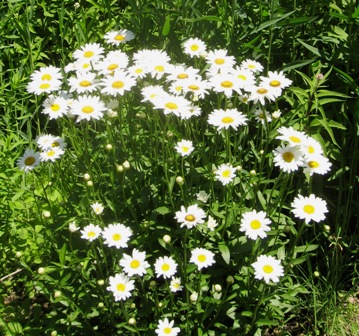
Exposure: Sun or Partial Shade
Leaf: Dark green and toothed
Height: 1-2 feet
Blooms: June- September
Bloom Color: white petals around yellow center
Description:
This is an escaped invasive species from Europe. It should not to be confused with the native yellow sunflower called Oxeye (Heliopsis helianthoides). Spreads both by seed and underground rhizomes. It has alternate and deeply lobed leaves. A single plant can produce thousands of seeds each year. Those seeds can stay viable for years in the soil, making infestations hard to control. Management techniques include select spraying it with herbicide or continually pulling out smaller infestations. Use caution, it is sometimes found in commercial "wildflower" seed mixes.
|

RETAIL NURSERY OPENS!
|
Come visit us at our retail nursery for all your native plant needs! Opens May 22nd! Location:
5300 Hwy 12, Maple Plain (next to McCain and assoc.)
Wednesdays 12pm-4pm
Weekend Plant Sales June 7th-8th June 28th-29th July 19th-20th August 9th-10th
|
|
Early Bloomers
What Natives Are Already Blooming?
By: Tracy Lawler
With May Day and Mother's Day, this is a huge month for flowers. Maybe instead of the clichéd tulips and daffodils we get bombarded with every spring, we should take a look at some beautiful Minnesota native flowers already in bloom. They have so much to offer, brilliant colors, attractive smells, and provide critical habitat and food for birds, butterflies, and bees. Here are a few examples of the early bloomers you can see right now and can plant in your own restoration area!
Wild Geranium (Geranium maculatum) is a small, easy to grow perennial flower that establishes well in sun or shade. It has a pink or rosy colored bloom that is loved by bees. It will bloom from May to July and grow 1 -2 feet tall. This native is a really nice addition to most restoration areas.
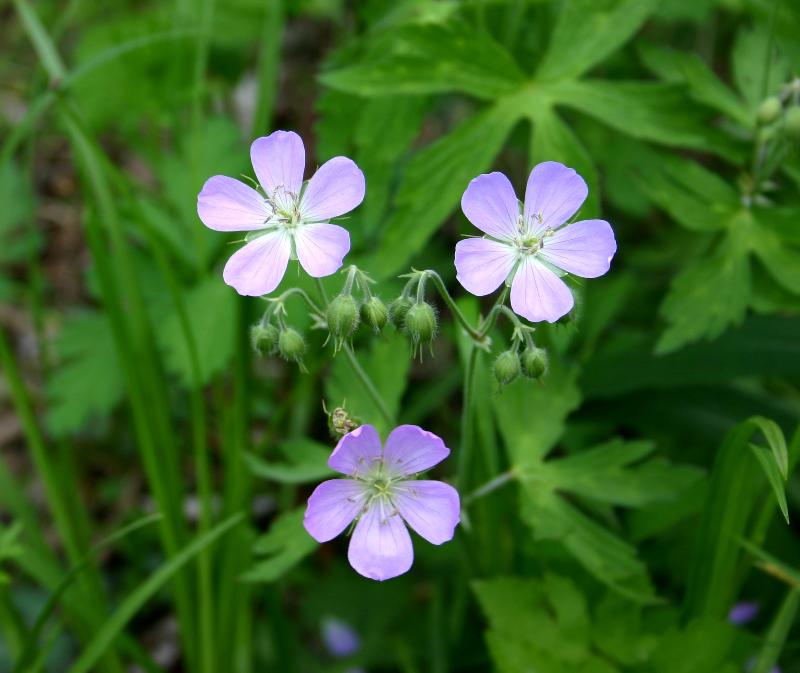 |
|
Delicate pink flowers emerge to add early color to your restoration
|
Columbine (Aquilegia Canadensis) is a captivating flower that is critical to wildlife. Timing is everything - this native is often the first nectar producing flower in the spring and a prime target of hummingbirds. The drooping red and yellow flowers bloom from May to July. Many butterflies and moths use the plant during their larval stages as well, making it an eye-catching complement to a butterfly garden.
 |
|
Intricate red and yellow Columbine flowers
|
Prairie Smoke (Geum triflorum) is another simply amazing spring flower. It's enchanting reddish-purple flower heads start off drooping, but become erect as they seed and develop wispy smoke-like plumes. The blooms last from May till June. Prairie Smoke is 6-12 inches in height and grows best in dry, sandy conditions.
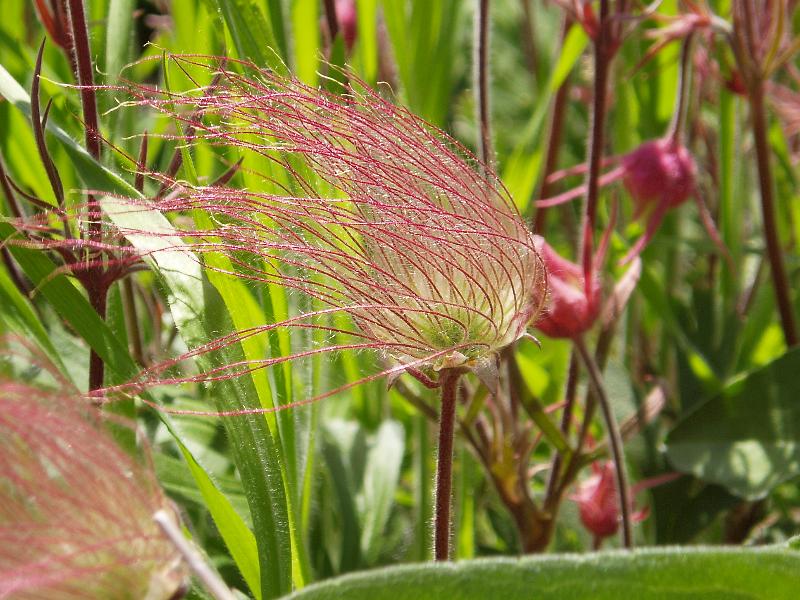 |
|
Prairie Smoke heads blowing in the wind
|
The Pasque Flower and Wild Lupine are two of our more distinctive spring flowers. They are featured in our Native Plant of the Month section of April and May's eNewsletters. We really can't wait - our retail greenhouse will be opening soon. These spring bloomers and a multitude of other flowers and grasses will be available to create striking additions to your garden or shoreline! Or who knows, maybe sneak a few into your Mom's garden for a unique and gorgeous gift that she and the resident wildlife will love, year after year!
|
|
 |
 |
Monarch Mayhem
State's butterfly is in decline!
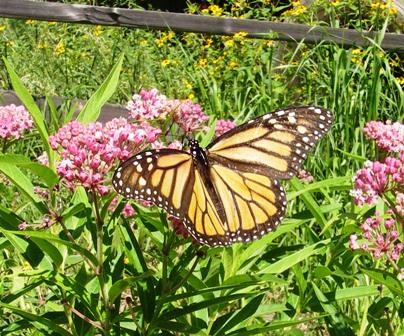 |
|
A monarch on Swamp Milkweed
|
New studies show the State's official butterfly, the Monarch, is facing large population declines. Estimates show about a 60% decline in the population from previous years. Multiple factors are thought to be the cause of their decline including last years drought, habitat loss, and herbicide use killing food sources normally found in agricultural fields.
What can you do to help bring back Monarch
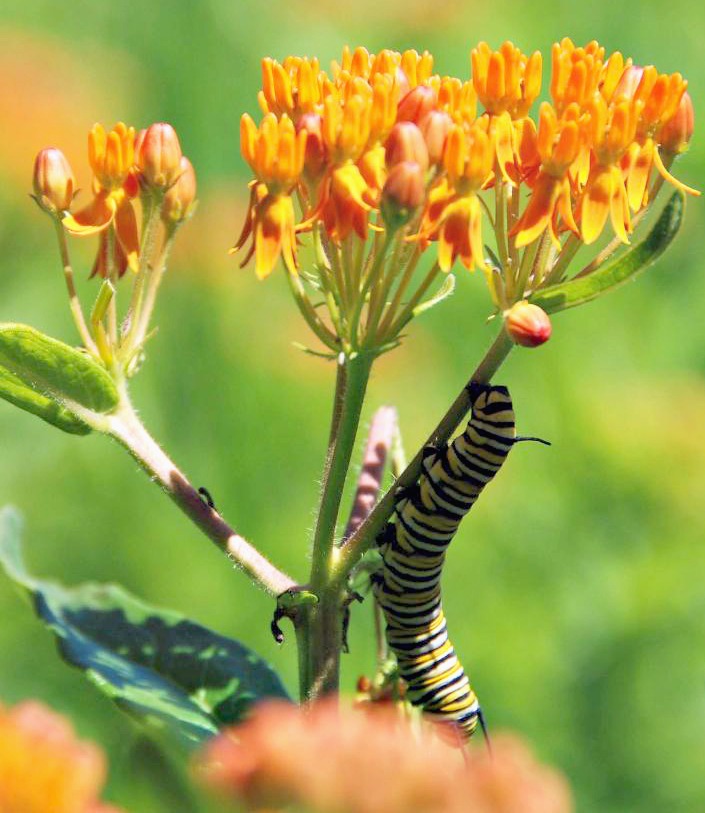 |
| A Monarch caterpillar feeding on Butterfly Milkweed |
populations? Monarchs use native milkweed species at all stages of their life cycle. Adults lay eggs on milkweed leaves, caterpillars eat the leaves when they hatch, and adults feed on the milkweed flower's nectar. Adults also feed on nectar from other native plants, important for gathering strength to survive their long migration. You can help replace the habitat lost in farm fields by planting milkweed species (Asclepias) species, Blazing Star (Liatris), Coneflower (Echinacea) species, and other flowering natives in your garden. Monarchs and other pollinators will appreciate the new food!
|
|